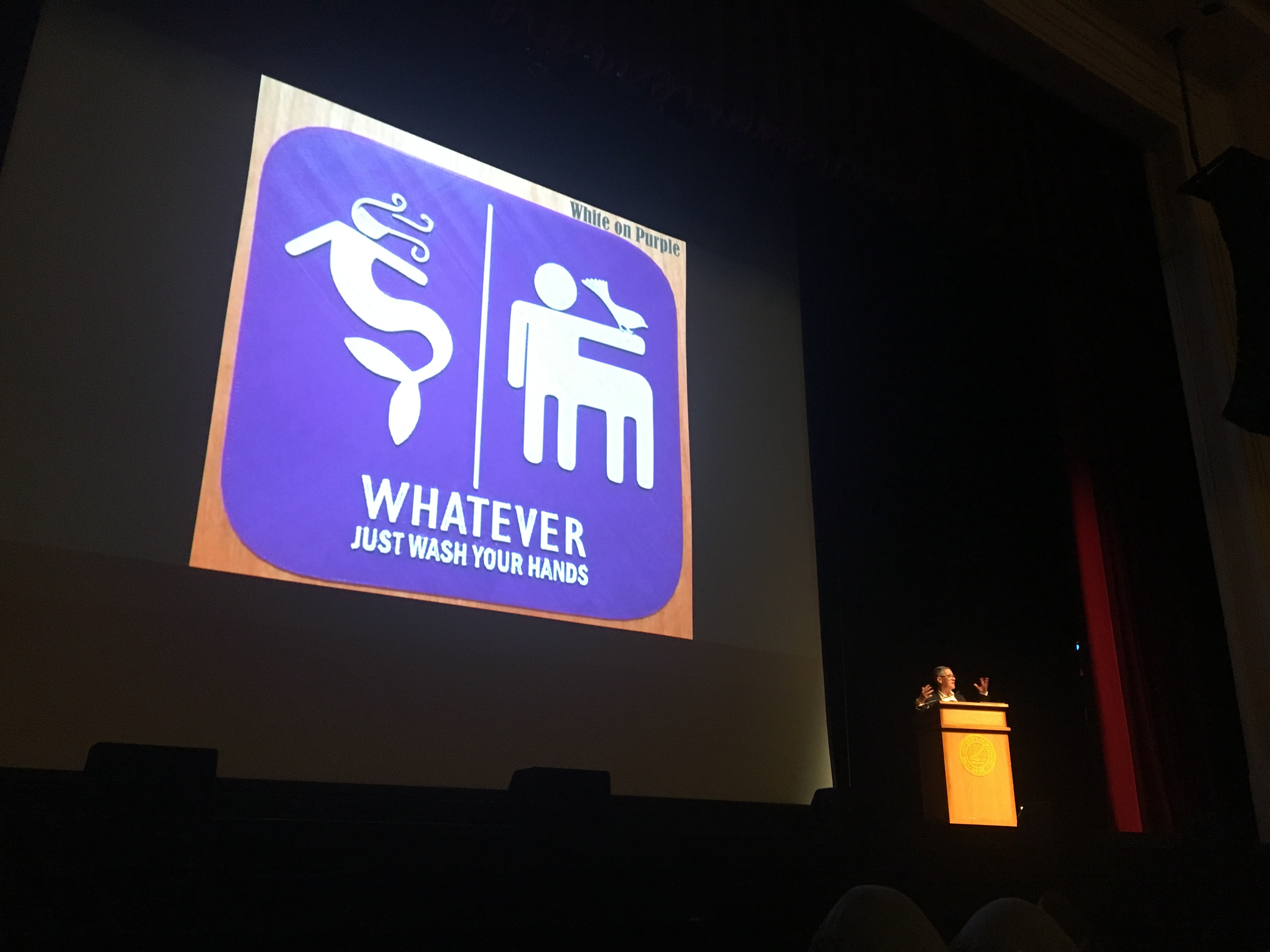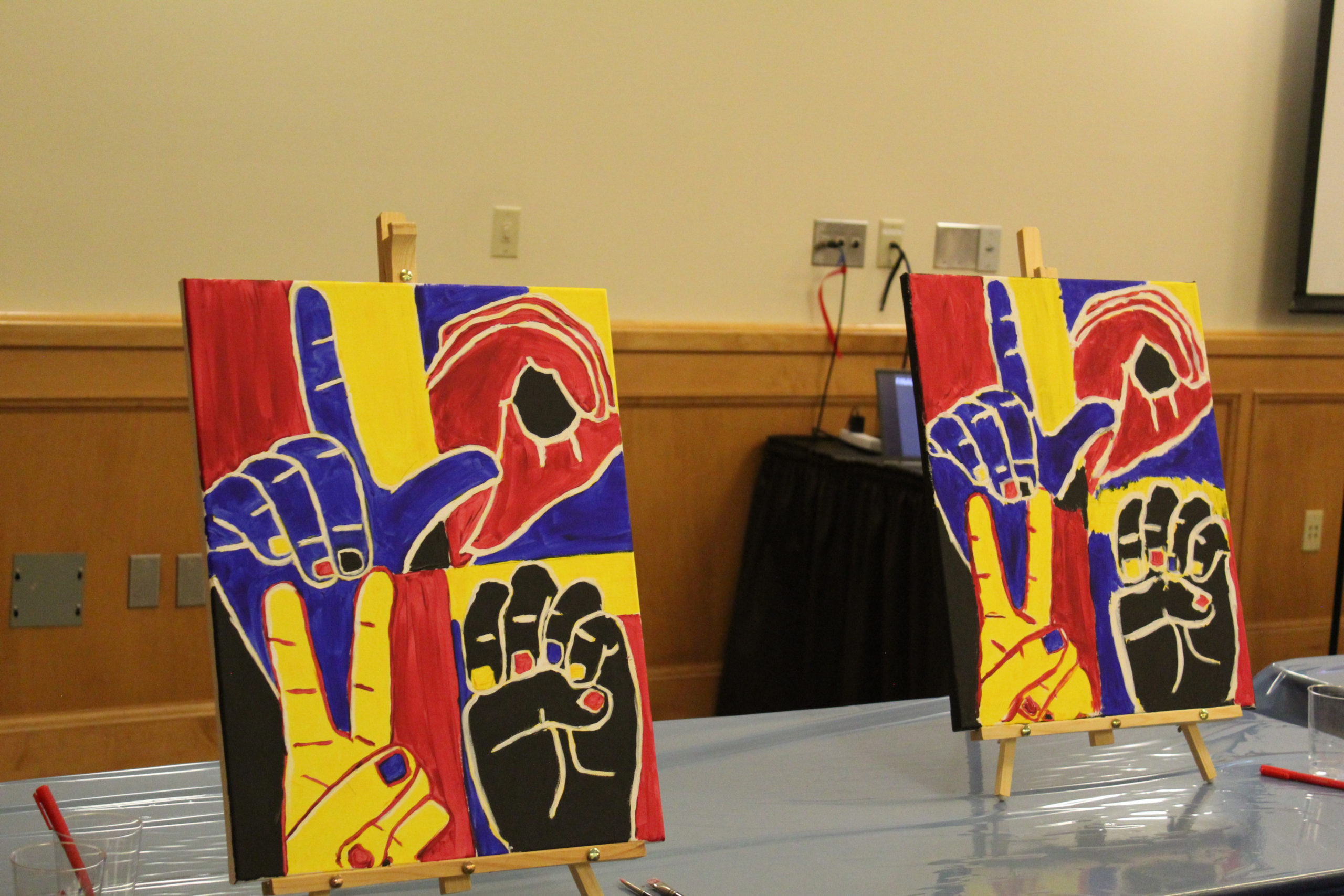Tearing down Confederate statues and gendered bathroom signs is more than a political act to Jack Halberstam. To him, that act is grounded in the idea of anarchitecture, an art form and the belief that changing physical spaces also changes the discriminatory social structures they support.
Halberstam, a Columbia University professor and international expert on gender and sexuality theory, took this idea further in a lecture at the University of Wyoming Arts and Sciences auditorium Thursday to show how anarchitecture can also explain the experience of queer and transgender people. His talk was part of the 2019 Bruce Richardson Lecture in the Humanities.
“The body is a building,” Halberstam. “It is a social construction.”
Just as architects construct buildings, society constructs notions of what exists, what is acceptable and what is not. A classic example is sex and gender. A variety of biological sexes exist naturally, including male, female and intersex, while American culture has long acknowledged only two genders, man and woman. This notion of binary gender is embedded in our architecture.
“Architecture is a deeply gendered discourse,” Halberstam said, citing national controversy over who is allowed to use men’s and women’s bathrooms. By only offering these two options and barring those whose gender does not fit one or the other, bathrooms reinforce the social construct that there are only two genders.
“The bathroom isn’t the problem,” Halberstam said. “The problem is binary gender.”
The existence of other gender identities threatens this binary system, Halberstam said. He uses “trans*” in his work, which includes six books about gender and sexuality, as an umbrella term for the myriad other labels for identities that fall between “man” and “women” — transgender, genderqueer, non-binary and others.
The challenge to society now, Halberstam said, is not to accept this minority of people who fall outside the neat binary of man or woman but to recognize that the binary system is artificial and untenable.
That’s where anarchitecture provides a useful example. In the 1970s, architect Gordon Matta-Clark took aim at exposing the ideology behind real estate and the power of architects to shape people’s behavior by shaping their environments.
Architects, members of a predominantly male profession even today, Halberstam said, “have been represented in our modern mythology as builders of worlds.”
Matta-Clark took issue with a world that prioritized property ownership and real estate profits over the universal human need for shelter. In one project, he cut a standard two-story house in two and photographed the result to visually represent splitting open the physical structure to reveal what was within. This, and his later projects deconstructing various physical structures, birthed anarchitecture, “a merging of anarchy and architecture,” Halberstam said.
“Anarchitecture offers an act of unmaking,” he said. Just as Matta-Clark’s anarchitecture projects sought to unmake the idea that property was only for the wealthy, Halberstam’s work seeks to unmake ideas that gender and sexuality are limited to binary options.
The language of architecture is also useful for describing gender, Halberstam said. People build their bodies, adding muscle or carving away fat. By extension, anarchitecture is a useful metaphor for the transgender experience. Along with the body, binary gender goes under the knife.



